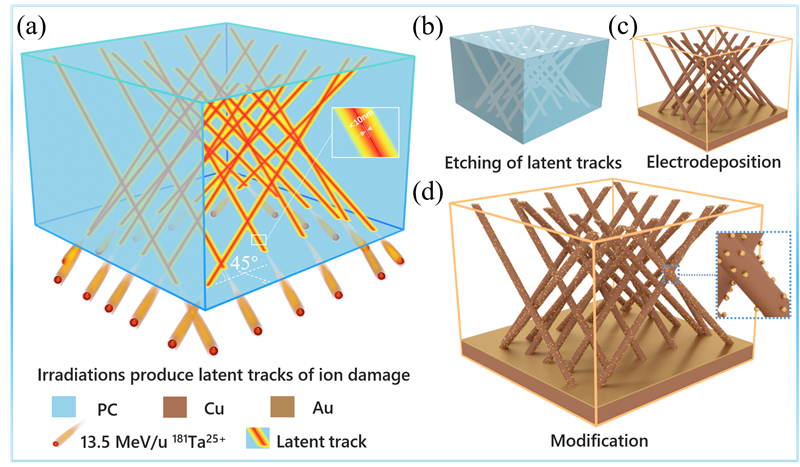Researchers Propose a New Host Configuration for Lithium Anodes Using Nuclear Track Method
Chinese researchers have lately proposed a new 3D host configuration for lithium anodes using the nuclear track method. The results have been published in Advanced Energy Materials.
The study was conducted by the researchers at the Materials Research Center of the Institute of Modern Physics (IMP), Chinese Academy of Sciences (CAS) and their collaborators at Beihang University.
Exploring ideal host configurations for high-performance battery anode materials is a frontier scientific issue. Lithium metal anodes are the most hopeful candidate material for next-generation energy storage batteries. However, problems such as the growth of dendrites during cycling have hindered its commercial applications. Therefore, research on the lithium anode host configuration that combines high energy density, high power density with high cycling stability is of great importance to develop high-performance lithium-ion batteries.
Based on the Heavy Ion Research Facility in Lanzhou (HIRFL), the researchers have constructed a new 3D porous composite host structure using the nuclear track technology. The composite host structure consists of a 3D copper framework and uniformly distributed lithiophilic sites.
The composite 3D host-lithium anode exhibits an ultrahigh cycle life of more than 2000 hours and high-rate capabilities. Moreover, it also exhibits a stable cycling performance after 600 hours even at a high area capacity combined with a high current density.
Compared with the electrochemical performance of other hosts constructed with identical materials, that of the porous composite host structure in this work has been significantly improved. Researchers then found that the high-mechanical strength, high-porosity and low-tortuosity of this structure are the main factors for the enhanced battery performance.
This work introduces the nuclear track method into the electrode materials field and proposes a new host configuration for lithium metal anodes. The study is of great importance for exploring high-performance anode materials, providing a possible solution to the key problems of lithium metal anodes.
This work was supported by the National Natural Science Foundation of China and the Key Research Program of Frontier Sciences, CAS.
DOI:https://doi.org/10.1002/aenm.202300129

Figure. Summary schematic of the 3D metallic host. (Image from IMP)
Contact:
LIU Fang
Institute of Modern Physics
Email: fangliu@impcas.ac.cn
Contact Information
Institute of Modern Physics
Email: fangliu@impcas.ac.cn


 甘公网安备 62010202000713号
甘公网安备 62010202000713号


